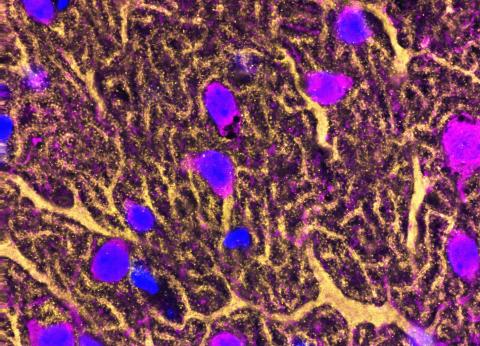Table of ContentsClose
The cerebellum is primarily known for its role in controlling motor behaviors, but research has shown that it also plays a crucial role in learning and has been linked to psychiatric disorders including schizophrenia, autism, and bipolar disorder. The research lab of Aislinn Williams (10MD, 10PhD) is taking a basic science approach to studying cerebellar circuitry and its implications in human learning mechanisms and disease.
Their target of interest, CaV1.3, has been associated with a number of psychiatric disorders in genome-wide studies. In mouse models that are missing CaV1.3—a calcium channel that is crucial for cell function and regulation—changes in cerebellar learning and motor behavior have been observed.
Annette Klomp, a neuroscience PhD candidate in the Williams lab, is looking into the role of CaV1.3 in molecular layer interneurons (MLIs, shown in magenta). These MLIs play an important role in inhibiting Purkinje cells (yellow) and priming those cells for learning mechanisms such as long-term depression or potentiation. While this mouse model exhibits learning difficulties and reduced MLI activity, this project shows that the absence of CaV1.3 does not change the shape or size of MLIs or Purkinje cells.
The lab continues to investigate how exactly CaV1.3 modulates learning.

